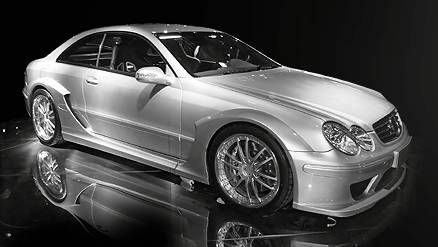
There is nothing like having a clean car. While anyone can simply clean his vehicle, it takes a lot of time and effort to get the car to look as if it just came off the showroom floor.
Detailers take great time and effort to ensure that your car looks its finest. Detailing is more than just washing the exterior and vacuuming the carpets. It's about getting into every nook and cranny and removing dirt and grime that have built up over the years--thus restoring the car to showroom quality.
The art of car detailing is said to have started in Southern California, though no one is quite sure exactly when. Detailing is defined as thoroughly cleaning a vehicle inside and out, in addition to applying wax and polishing the vehicle, thus producing a level of detail that would be deemed show-quality.
The practice of car detailing has spread throughout the United States and has become more than just a fad. Currently, over 50,000 detailers exist across the country, and these individuals rake in approximately $100,000 a year in detailing sales.

Sometimes an individual will have his vehicle detailed simply because he wants a clean car. At other times, detailing becomes a very serious business, especially when the person having her auto detailed intends to enter it in a car show. In car shows, a vehicle is often judged partially on how well-kept and clean it appears. One such car show that is devoted mainly to the appearance of cars is the Concours d'Elegance, sometimes referred to as the Concours.

There are different methods of auto detailing. One is exterior detailing, which includes waxing, claying, correcting paint defects and polishing the exterior of the vehicle.
The second type is interior detailing. Interior detailing typically involves liquid cleaners and brushes. Every surface within the interior of the car must be cleaned, from the dashboard, console and visors to the instrument panel. Vacuuming is performed as well.
The third type of detailing has to do with the engine: It involves removing grease and dirt from the engine bay with all-purpose cleaners and de-greasers.

Though it would appear that detailing covers every aspect of cleaning a vehicle, it does not encompass considerations like upholstery work, painting, body work or mechanical repair.
The purpose of detailing is to bring out the vehicle's appearance potential via the polishing and waxing of exterior paint, wheels and chrome, and by giving the upholstery and seats a thorough cleaning.
Depending on the detailer, a customer might also be able to purchase undercoating services (including rust-proofing) and interior sealant. Some detailers even repair convertible tops or vinyl upholstery. Most do not, however, and will usually refer you to professionals who specialize in such repairs.
Most auto-detailing shops are in remote locations. Because most detailers are not businessmen but craftsmen, they do not typically advertise their services aggressively. You are most likely to find an auto detailer working in a mechanic's garage, or perhaps out of a private residence. Mobile auto detailing is also becoming increasingly popular, as it allows the owner to have his vehicle professionally detailed without ever having to leave home or the office.